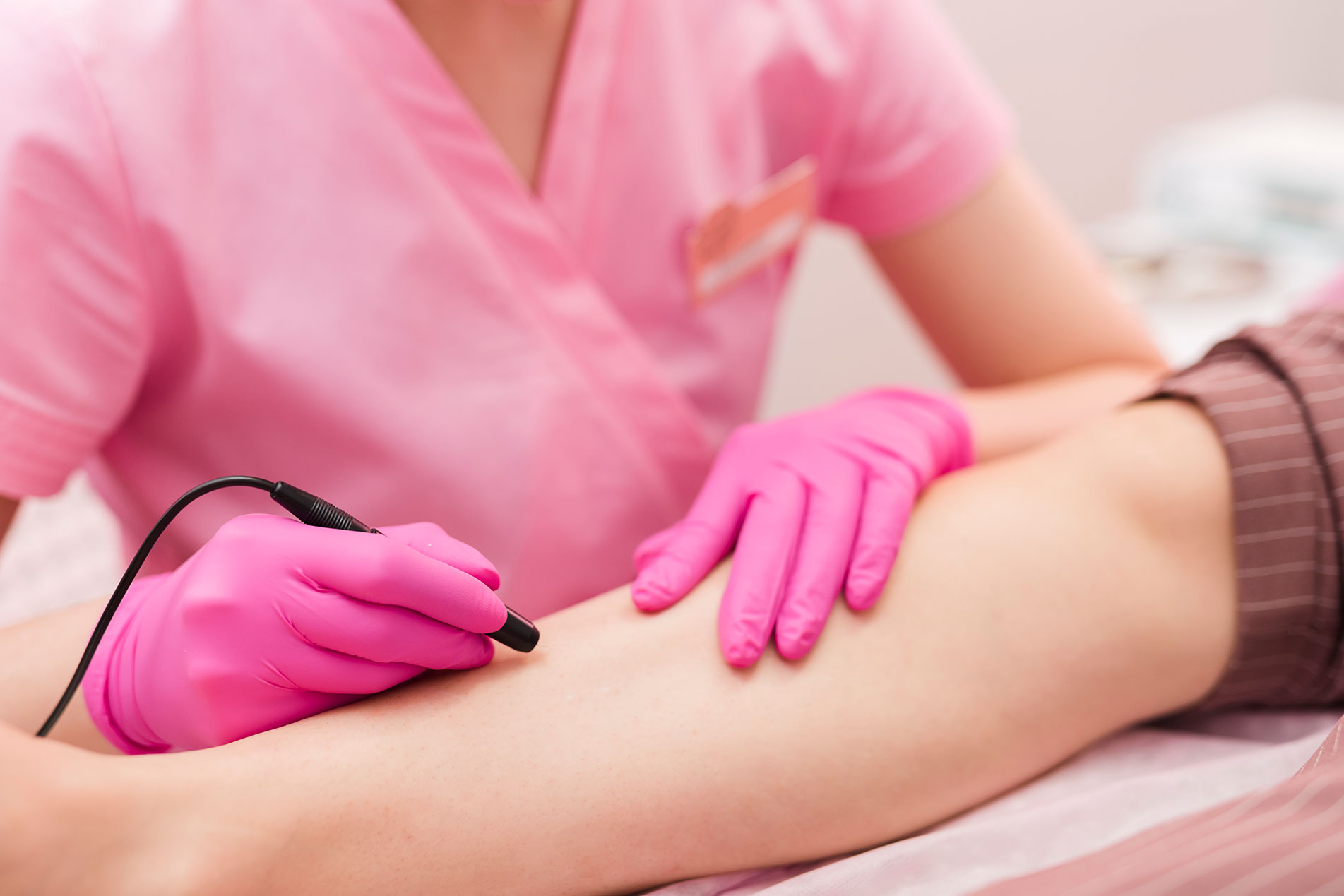Spider Vein Treatment: Embrace Beautiful, Vein-Free Skin
Spider veins, those tiny dilated blood vessels visible just beneath the skin’s surface, can be a source of concern for many. With their distinct red, blue, or purple appearance and web-like or branching pattern, these veins resemble spider’s legs or a delicate spider web. While they can appear on various parts of the body, they are most commonly observed on the legs. However, spider veins can also manifest on the face, including the cheeks, nose, and chin, as well as occasionally on the chest or arms.
Similar to varicose veins, spider veins are smaller and closer to the skin’s surface. Their presence may be attributed to weak or damaged vein valves, hormonal changes, prolonged periods of sitting or standing, hereditary factors, or even sun exposure. While spider veins typically do not pose significant health risks, they can be a cosmetic concern for many individuals, affecting their confidence and self-esteem.
Dr. Rani, with her expertise and knowledge, will determine the most suitable non-surgical spider vein treatment for your specific case. Through a comprehensive assessment, she will evaluate your condition, discuss the available options, and recommend the best approach based on your individual needs and preferences. With Dr. Rani’s personalized care, you can expect a range of effective treatments to address spider veins and unveil the beauty of vein-free skin. From advanced laser therapies to sclerotherapy, she will guide you towards the most appropriate solution, tailored to your unique circumstances.
Common types of non-surgical treatments for spider veins:
Sclerotherapy: Sclerotherapy is a popular non-surgical treatment for spider veins that involves injecting a specialized solution directly into the affected veins. The solution irritates the lining of the veins, leading to their closure. Over time, the body absorbs the treated veins.
Laser Therapy: The laser light is absorbed by the blood vessels, leading to their selective destruction while leaving the surrounding skin unharmed. Multiple sessions may be needed to achieve desired results.
Intense Pulsed Light (IPL) Therapy: IPL therapy is another non-surgical treatment option for spider veins. It utilizes broad-spectrum light to target the pigmented hemoglobin in the veins, heating and damaging them. This prompts the body to gradually break down and remove the treated veins. Like laser therapy, IPL may require multiple sessions for optimal outcomes.
Radiofrequency Ablation: Radiofrequency ablation uses radiofrequency energy to heat and destroy the spider veins. A specialized device delivers controlled heat to the veins, causing them to collapse and eventually be absorbed by the body. This treatment is typically well-tolerated and can effectively reduce the appearance of spider veins.
Compression Therapy: Compression therapy involves wearing compression stockings or socks to apply pressure to the legs, promoting better blood flow and reducing the visibility of spider veins. While compression therapy does not eliminate spider veins entirely, it can provide symptomatic relief and prevent further progression of the condition.
Risk factors for non-surgical spider veins:
The risk factors for non-surgical spider vein treatment can vary depending on the specific treatment method used. Some general risk factors to consider are:
- Allergic Reactions
- Skin Sensitivity
- Hyperpigmentation or Hypopigmentation
- Incomplete Results
- Treatment Complications
Frequently Asked Questions
Non-surgical treatments for spider veins can be highly effective in reducing the appearance of spider veins. However, it’s important to note that complete elimination may not always be achievable. The effectiveness of the treatment depends on factors such as the size, location, and severity of the spider veins, as well as individual response to the treatment.
The duration of each treatment session varies depending on the size and number of spider veins being treated. Generally, sessions can range from 15 minutes to an hour.
The number of treatment sessions needed to achieve desired results can vary depending on the severity of the spider veins and individual response to the treatment. Multiple sessions are often required, typically spaced several weeks apart, to gradually fade and eliminate the spider veins. Dr. Rani will assess your condition and provide a personalized treatment plan with an estimated number of sessions.


